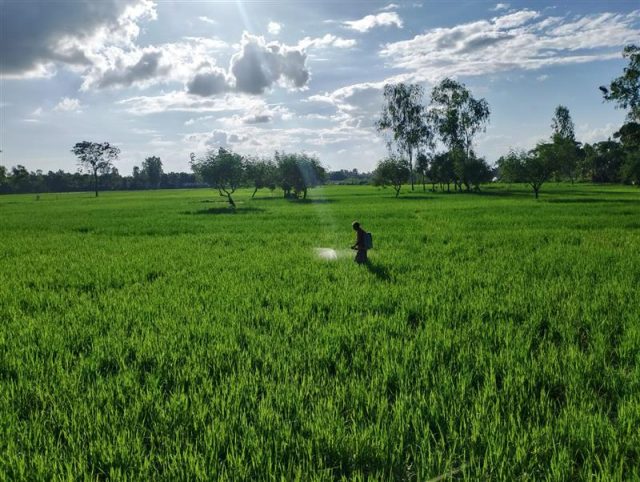Research shifts policy from energy subsidy to water savings in Uzbekistan's irrigated heartland
- From
-
Published on
02.07.21
- Impact Area

In Uzbekistan, most agricultural land is irrigated with water pumped from two rivers, the Amu Darya and Syr Darya. This pumping consumes 20% of the country’s power, and to keep power affordable for farmers and other users, the government sinks USD 450 million into energy subsidies every year. Research by the International Water Management Institute (IWMI) and CGIAR Research Program on Water, Land and Ecosystems (WLE) has demonstrated an alternative, and led the government to redirect some subsidies towards more efficient irrigation that saves water and energy.
The researchers determined the performance of different irrigation methods under the conditions of the Aral Sea Basin, and found that current practices are energy-inefficient and create return flow, waterlogging and salinity problems. Drip irrigation, however, achieved a 30% saving in water – and therefore pumping energy – while improving yields.
Image credit: Neil Palmer/IWMI
Related news
-

New Genomic Discovery from ICRISAT Could Save Farmers Millions by Preventing Groundnut Sprouting Before Harvest
International Crops Research Institute for the Semi-Arid Tropics (ICRISAT)02.12.25-
Food security
-
Poverty reduction, livelihoods & jobs
Breakthrough study identifies varieties and key genes to halt sprouting before harvest in groundnut …
Read more -
-

From Dirt to Decision-Making: Governance and Soil Health Must Go Hand in Hand
Multifunctional Landscapes Science Program26.11.25-
Biodiversity
-
Environmental health
-
Environmental health & biodiversity
In October, the world convened in Des Moines for the 2025 Borlaug Dialogue under the…
Read more -
-

Cultivating climate-smart rice: How specific cultivars and smarter fertilizing can cut emissions and maintain yield
International Rice Research Institute (IRRI)19.11.25-
Climate adaptation & mitigation
-
Food security
By Bushra Humaira Sadaf A team of researchers from the Bangladesh Rice Research Institute (BRRI), I…
Read more -
